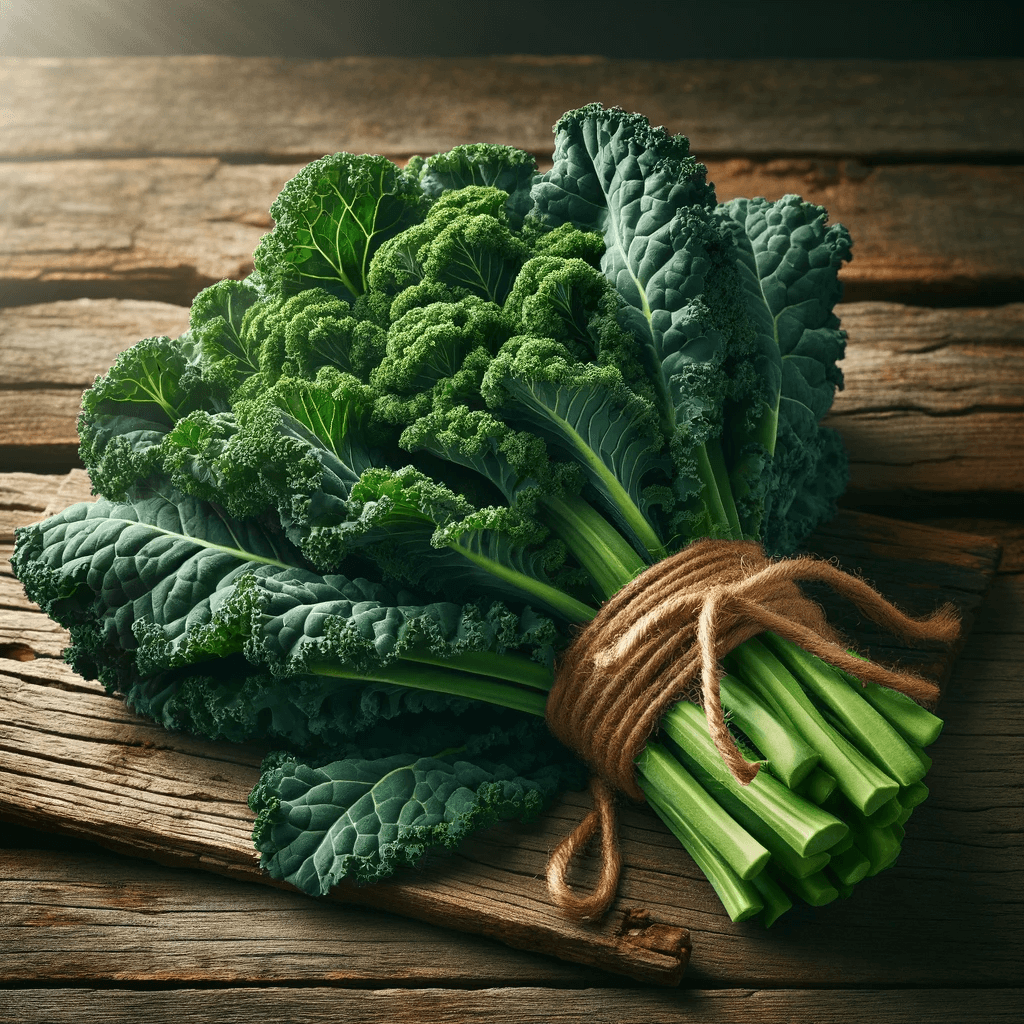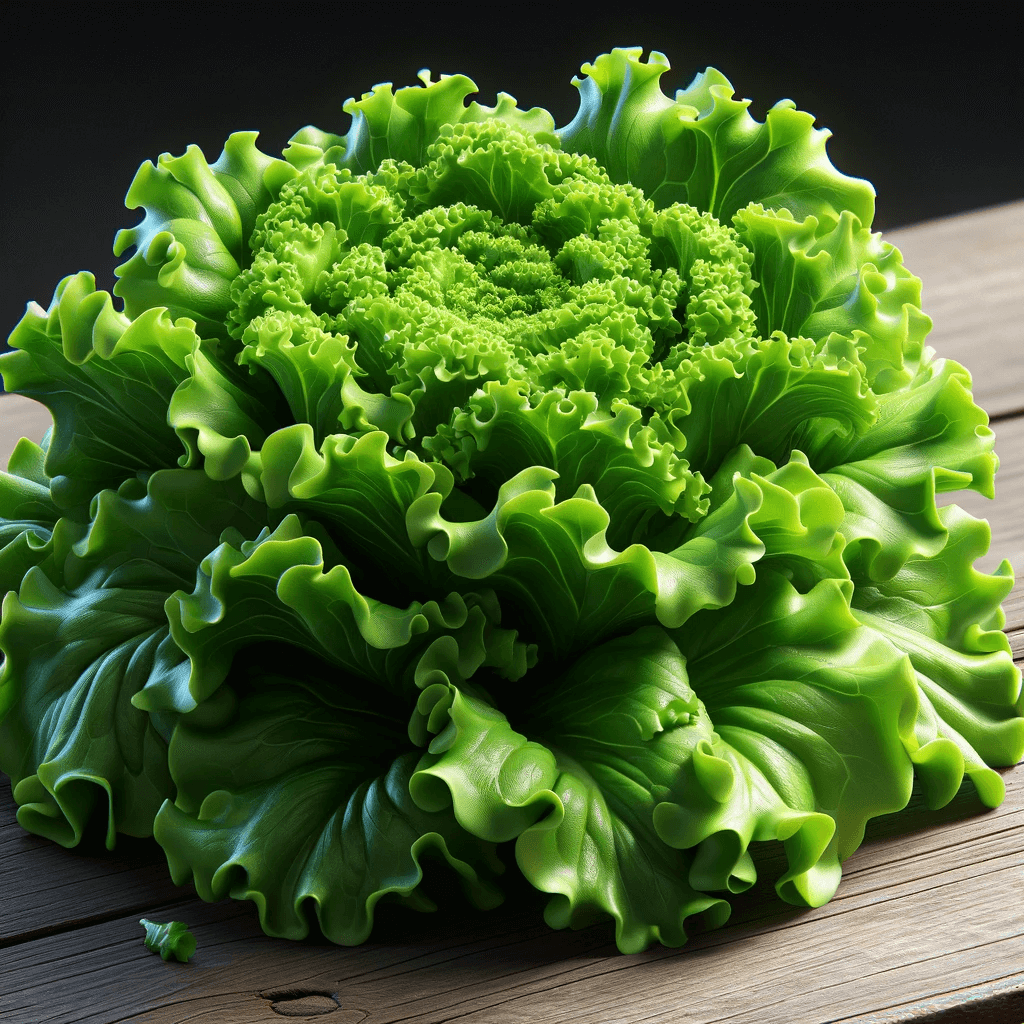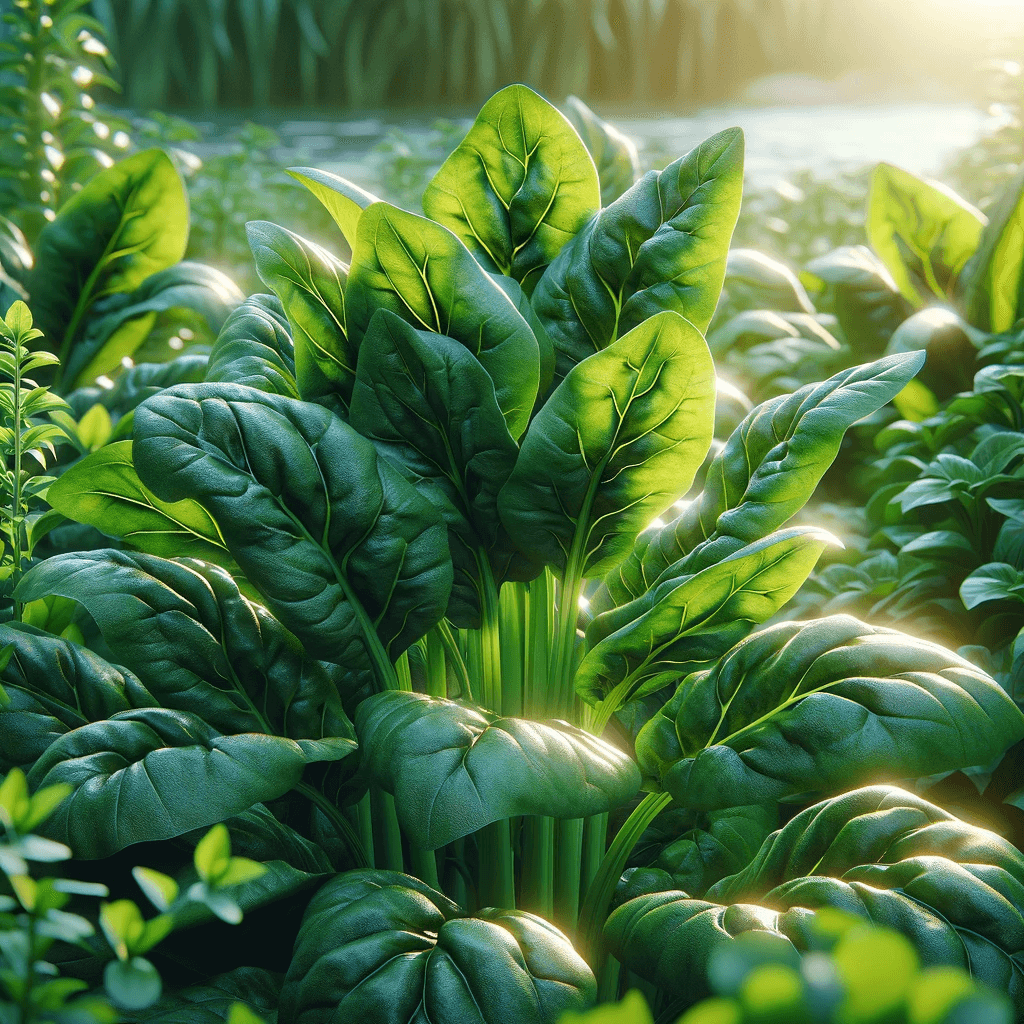Kale, a member of the cabbage family, is a highly nutritious leafy green vegetable that has gained immense popularity in recent years. Packed with vitamins A, C, and K, as well as minerals like calcium and iron, kale is considered a nutritional powerhouse. Its high fiber content and low-calorie count make it an excellent addition to any healthy diet. Once you learn how to grow Dwarf Siberian improved kale from seed, and just how easy it is, you'll always have a nutrition powerhouse in the garden.
Kale is known for its versatility; it can be enjoyed raw in salads or smoothies, sautéed as a side dish, or even baked into crispy kale chips. This article will delve into kale gardening by focusing on one specific variety: Dwarf Siberian Improved Kale.
This particular type of kale is an exceptional choice for home gardeners with limited space or those looking to cultivate greens in containers. Dwarf Siberian Improved Kale offers all the benefits of traditional kale but in a compact form that thrives in small gardens or even on balconies.
Understanding Dwarf Siberian Improved Kale
Description of the Plant's Appearance, Size, and Growth Habit
Dwarf Siberian Improved Kale seed is a remarkable variety with several distinct characteristics. This petite version of traditional kale showcases compact plants with vibrant, deeply lobed leaves that form a rosette-like shape. The foliage ranges from dark green to bluish-green, creating an eye-catching display in any garden or container.
These plants typically reach a height of around 12-15 inches (30-38 cm) and have a spread of about 18-20 inches (46-51 cm). The growth habit of Dwarf Siberian Improved Kale is particularly advantageous for those with limited gardening space or who prefer container gardening.
Its compact size makes it an excellent choice for small gardens, balconies, patios, or windowsills. Despite its diminutive stature, this variety does not compromise on yield or flavor.
- Days till maturity: Typically 50-60 days from planting.
- Planting depth: About 1/4 inch deep.
- Plant spacing: Seedlings should be thinned to 12-18 inches apart.
- Days to germination: Usually 5-10 days, depending on soil temperature.
- Indoors or Direct Sown: This can be started indoors or in direct sown. For an earlier harvest, start indoors 4-6 weeks before the last frost date.
- Full Sun or Partial Shade: Prefers full sun but can tolerate partial shade.
- When to harvest: Leaves can be harvested when they are large enough to eat, typically around 30 days after planting. Flavor improves after a light frost.
- How tall does the plant get? Dwarf Siberian Improved Kale usually grows to about 12-15 inches tall.
- How wide does the plant get? The plant can spread up to 18-24 inches.
- Native: Like other kale varieties, this kale variety originates from the Mediterranean region.
- Family: Belongs to the Brassicaceae (mustard) family.
$2.49
Dwarf Siberian Improved Kale Seeds - Heirloom, Non-GMO, Non-Hybrid, Open-Pollinated | Easy-to-Grow Cold-Hardy Kale for Year-Round Gardening Grow your own nutritious and delicious Dwarf Siberian Improved Kale with our premium-quality, heirloom, non-GMO, non-hybrid, and open-pollinated seeds! This improved variety of… read moreDwarf Siberian Improved Kale Seeds
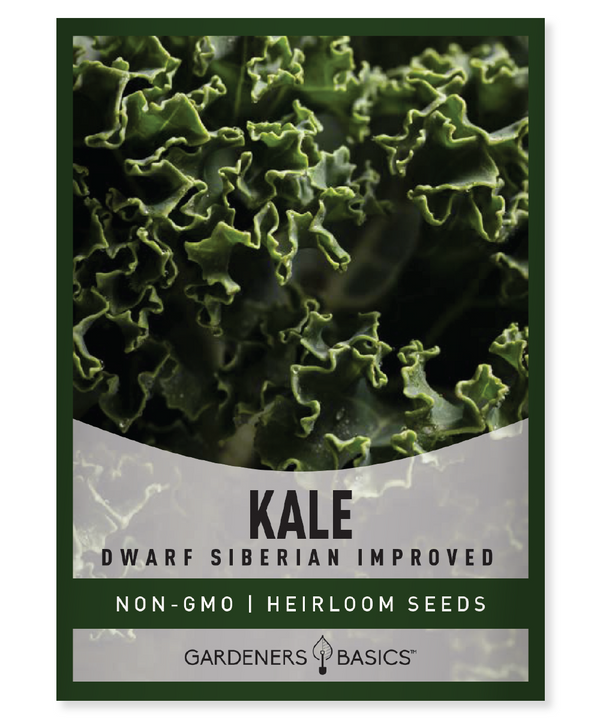
Discussion on Why This Variety is Ideal for Small Gardens or Containers
Dwarf Siberian Improved Kale offers numerous advantages, making it extremely well-suited for small gardens and containers. Firstly, its compact nature allows gardeners to maximize their available space efficiently. Vertical gardening techniques can optimize limited areas by growing this kale variety in containers or confined beds.
Furthermore, the dense and bushy growth habit of Dwarf Siberian Improved Kale ensures that each plant occupies minimal horizontal space while still producing an abundance of nutritious greens throughout the growing season. As this variety doesn't require excessive spreading room like other kale cultivars might demand due to their larger size, it harmoniously accommodates urban gardeners with tight confines.
Explanation of the Improved Features Compared to Regular Siberian Kale
Compared to regular Siberian kale varieties commonly available in the market, Dwarf Siberian Improved Kale boasts distinctive improvements. In terms of flavor, this variety offers an exceptional balance between sweet and tangy notes, making it a delight to include in various culinary creations. Its tender leaves possess a delicate texture that adds elegance and versatility to dishes.
Moreover, Dwarf Siberian Improved Kale exhibits enhanced cold tolerance, allowing it to thrive in cool weather conditions. This makes it an excellent choice for autumn and winter harvesting when many other greens struggle.
Additionally, its compact size enables efficient use of floating row covers or other protective measures to shield the plants from severe cold spells, allowing for extended harvest periods. By selecting high-quality seeds of Dwarf Siberian Improved Kale and understanding its unique attributes, gardeners can cultivate this easy-to-grow variety successfully in small spaces or containers, ensuring a bountiful harvest of nutritious greens throughout the cooler months with minimal effort.
Getting Your Seeds From Gardeners Basics
We here at Gardeners Basics are getting fresh seeds constantly. We go through seed really quickly with our Amazon sales. Our seed is tested for high germination rates, and we offer only high-quality heirloom seeds for planting. Thanks for giving us a shot when you want to buy Dwarf Siberian Improved Kale Seeds for sale.
Overview of necessary equipment and materials for successful seed-starting
Setting the stage: Preparing for kale seedling triumph
Starting kale seeds indoors is a good choice to ensure a head start on the growing season and maximize yield. To achieve this, gather the necessary tools and materials to create an optimal environment for your future kale seedlings.
You will require seed trays or pots, preferably with drainage holes, filled with a high-quality potting mix that provides adequate moisture retention while allowing proper drainage. Ensure you have labels or markers for identifying different kale varieties.
A misting bottle or a small watering can with a fine rose attachment will help maintain moisture levels without damaging delicate young plants. For successful germination, provide consistent warmth using a heat mat or by placing trays in a warm location, ideally between 65-75°F (18-24°C).
Supplemental light from fluorescent grow lights will offer sufficient illumination if natural sunlight is limited. Proper air circulation is vital to prevent diseases such as damping-off; consider using fans or opening windows periodically.
Starting Seeds Indoors
Step-by-step guide on preparing seed trays or pots with a suitable growing medium
Before embarking on growing Dwarf Siberian Improved Kale from seed, creating an optimal environment for germination and early growth is essential. Select high-quality seed trays or pots with sufficient drainage holes to prevent waterlogging. The use of biodegradable pots can simplify the transplanting process later on.
Next, prepare a suitable growing medium by combining equal parts of well-draining soil, perlite, and compost. This mixture provides the necessary nutrients and ensures proper moisture retention without becoming waterlogged.
$15.95
Fresh Lettuce Seed Assortment – 10 Heirloom Varieties, Perfect for Hydroponics, Indoor & Outdoor Gardening! Our 10 Salad Greens Lettuce Seeds Variety Pack is the ultimate selection for any home gardener or hydroponics enthusiast! This carefully curated assortment features heirloom, non-hybrid,… read moreSalad Greens Lettuce Seed Assortment | 10 Variety Pack
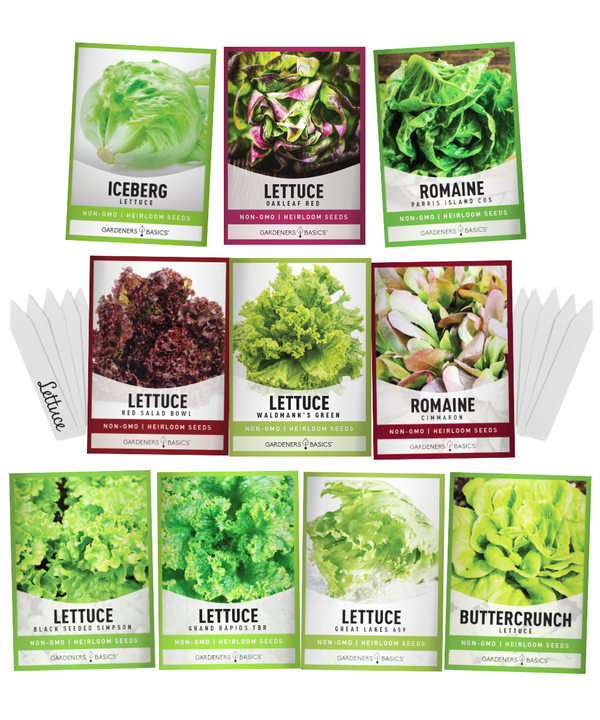
Optimal temperature, light, and moisture conditions for germination
To achieve successful germination of Dwarf Siberian Improved Kale seeds, maintaining ideal environmental conditions is crucial. This cool season crop thrives in temperatures between 40°F (4°C) and 75°F (24°C), with an optimum range of 60°F (15°C) to 70°F (21°C). Place the prepared seed trays or pots in a warm indoor location that receives ample sunlight, or use grow lights to provide adequate illumination during the initial stages.
Regarding moisture requirements, ensure that the growing medium remains moist but not waterlogged. Avoid overwatering as it can lead to rotting seeds or damping-off disease.
Regularly monitor soil moisture levels by lightly pressing your finger into the soil; if it feels dry up to your first knuckle, it's time for watering. Mist the top layer gently or use a spray bottle to prevent displacing seeds.
Benefits of using a heat mat or grow lights if necessary
Using a heat mat or grow lights can offer significant advantages for gardeners residing in regions with cooler climates or those who wish to kickstart their kale plants' growth indoors before transplanting outside. A heat mat beneath the seed trays or pots helps maintain consistent soil temperature.
This gentle warmth stimulates quicker and more uniform germination, giving your kale seeds a head start. Similarly, grow lights are particularly beneficial in areas where natural sunlight is limited or during the early stages of seedling growth when they require extended illumination.
Position the grow lights approximately 2-4 inches above the seedlings and adjust their height as they grow to prevent leggy growth. These artificial light sources ensure that your Dwarf Siberian Improved Kale receives sufficient light even when grown indoors, leading to strong, healthy plants.
Importance of proper air circulation
While attention is often focused on providing adequate light and moisture, proper air circulation is equally essential during seed starting indoors. Good airflow prevents stagnant conditions that can lead to mold, fungal issues, or damping-off disease.
To ensure optimal air circulation around your kale seedlings, consider using a small fan set on low speed nearby to gently move the air within the growing area. This simple measure reduces excess humidity and promotes stronger stems by simulating outdoor conditions.
Challenges such as damping off disease
Damping-off disease is one potential challenge that gardeners should be aware of during the indoor seed-starting process for Dwarf Siberian Improved Kale. This fungal infection can cause severe damage to emerging seedlings by rotting their stems at the soil level.
To minimize its occurrence, it's crucial to maintain cleanliness in your growing environment by sterilizing trays or pots before use and using fresh, high-quality seed-starting mixtures free from pathogens. Another effective preventive measure against damping-off disease is to water from below rather than overhead watering with a fine-mist spray bottle, or watering can spout directly onto the soil surface.
This method ensures that excess moisture doesn't accumulate on the seedlings' delicate stems, reducing the risk of fungal growth. Additionally, providing adequate space between seedlings and proper air circulation within your growing area helps prevent excess humidity, reducing the likelihood of this disease affecting your young kale plants.
Transplanting Seedlings Outdoors
Determining the Right Time to Transplant Based on Local Climate Conditions
Before transplanting your Dwarf Siberian Improved Kale seedlings outdoors, it is crucial to consider your local climate conditions. As kale is a cool-season crop, it thrives in cooler temperatures rather than hot summer weather. Wait until the threat of frost has passed and the soil has warmed up sufficiently before transplanting.
The optimal soil temperature for planting kale is around 45°F (7°C) or higher. If you live in a region with a short growing season, starting seeds indoors 4-6 weeks before the last expected frost date can give your plants a head start.
Explaining When Soil Temperatures Are Suitable for Planting
Soil temperature plays an essential role in successful kale transplants. Kale prefers well-drained soil that is rich in organic matter and nutrients. When testing if the soil is ready for planting, ensure it has reached at least 45°F (7°C) consistently over several days or weeks.
Cold, waterlogged soils can stunt the growth of seedlings and increase their vulnerability to diseases and pests. A soil thermometer can help accurately gauge the temperature and avoid potential setbacks.
$15.95
Fresh Lettuce Seed Assortment – 10 Heirloom Varieties, Perfect for Hydroponics, Indoor & Outdoor Gardening! Our 10 Salad Greens Lettuce Seeds Variety Pack is the ultimate selection for any home gardener or hydroponics enthusiast! This carefully curated assortment features heirloom, non-hybrid,… read moreSalad Greens Lettuce Seed Assortment | 10 Variety Pack

Frost Tolerance Levels in Dwarf Siberian Improved Kale
Dwarf Siberian Improved Kale exhibits excellent frost tolerance, making it suitable for early spring and fall plantings when temperatures drop below freezing. While this variety can withstand light frosts without significant damage, severe cold spells may require some protective measures to ensure its survival.
a) Mentioning That It Can Withstand Light Frosts But May Require Protection During Severe Cold Spells. When faced with light frosts during early spring or late fall, Dwarf Siberian Improved Kale demonstrates resilience by enduring temperatures as low as 20°F (-6°C).
However, providing additional plant protection is advisable if a severe cold snap is forecasted. Covering them with floating row covers or cloches can help shield them from freezing temperatures and prevent frost damage.
b) Suggesting Using Row Covers or Cloches as Protective Measures Floating row covers and cloches act as insulating barriers that protect against frost damage and pest infestations.
These protective coverings trap heat, creating a microclimate that shields the plants from extreme temperature fluctuations. Ensure the coverings are securely anchored to prevent wind damage and allow for proper air circulation.
Hardening Off Seedlings Before Transplanting into the Garden
Hardening off your seedlings is essential in acclimating them to outdoor conditions before transplanting into the garden. About a week before transplanting, gradually expose your kale seedlings to outdoor conditions. Start by placing them in a sheltered area with partial shade for a few hours each day, then gradually increase their exposure to full sun over several days.
This process allows the plants to adapt gradually to direct sunlight, wind, and fluctuating temperatures. During this hardening-off period, pay attention to moisture levels and ensure the soil remains moist but not waterlogged.
Avoid overwatering or underwatering during this critical transition phase. Once your seedlings have acclimated after about a week of gradual exposure, they will be ready for transplantation into their permanent garden location.
Remember that healthy kale starts with quality seeds and proper care throughout its growth cycle. Following these guidelines for successful transplanting outdoors, you can enjoy an abundant harvest of flavorful Dwarf Siberian Improved Kale throughout the growing season while embracing its remarkable frost tolerance.
$109.95
Ultimate Survival Seed Kit – 140 Variety Pack for Self-Sustaining Gardens, Long-Term Food Storage & FREE Ammo Can for Secure Storage Introducing the Ultimate Survival Seed Kit — your all-in-one solution for sustainable gardening, survival prepping, and self-sufficient living! This… read moreUltimate Survival Seed Kit: 140 Varieties for Self-Sufficient Gardens & Food Storage
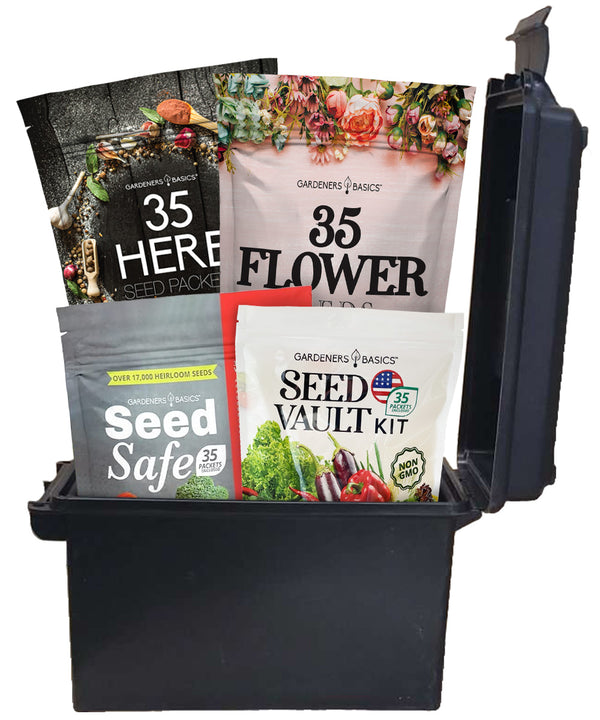
$199.95
Plant Care and Maintenance
Proper Spacing
When growing Dwarf Siberian Improved Kale, proper spacing is key to ensure healthy and robust plants. Each kale seedling should be given enough room to grow and develop fully. As a general guideline, space the seedlings approximately 12-18 inches apart in rows around 18-24 inches apart.
This spacing allows for adequate air circulation between the plants, reducing the risk of fungal diseases and promoting healthy growth. It's important to consider the mature size of Dwarf Siberian Improved Kale when determining the spacing.
Although it is a dwarf variety, it can still reach a height of 12-18 inches with a spread of about 10-14 inches. Providing sufficient space between each plant prevents overcrowding and allows ample access to sunlight, which is crucial for optimal photosynthesis and nutrient production.
Conclusion- How To Grow Dwarf Siberian Improved Kale From Seed
Growing Dwarf Siberian Improved Kale from seed is a rewarding experience that yields an abundance of nutritious leaves ideal for culinary creations. Selecting high-quality seeds and starting them indoors 4-6 weeks before the last frost date gives your kale plants a head start in their journey toward maturity. Your kale crop will thrive with proper care and maintenance, including regular watering, well-drained soil enriched with organic matter, adequate spacing between plants, and protection from pests and diseases using floating row covers or crop rotation practices.
Remember that kale is a cool-season crop that enjoys full sun but can tolerate some shade. Regularly harvest young leaves from the outer part of each plant while allowing inner leaves to continue growing for multiple harvests throughout its lifespan.
With its ease of cultivation and resilience in cool weather conditions, Dwarf Siberian Improved Kale presents an opportunity for seasoned gardeners and newcomers alike to enjoy homegrown greens bursting with flavor and nutrition. So, get your hands on some quality seeds and plant them with care to embark on a kale-growing journey that will leave you satisfied and proud of your green thumb prowess.
Frequently Asked Questions - How To Grow Dwarf Siberian Improved Kale From Seed
1. Can Dwarf Siberian Improved Kale be grown in containers?
Yes, this variety of kale can be successfully grown in containers. Ensure the container is at least 12 inches deep and has good drainage.
2. How often should I water my kale plants?
Water regularly to keep the soil consistently moist, especially in dry conditions. Avoid over-watering, as this can lead to root rot.
3. Is Dwarf Siberian Improved Kale resistant to cold weather?
This kale variety is known for its hardiness in cold temperatures and can tolerate frost, enhancing its flavor.
4. What are common pests that affect Dwarf Siberian Improved Kale, and how can I control them?
Common pests include aphids, cabbage worms, and slugs. Control them using organic methods such as neem oil, insecticidal soap, or handpicking.
5. Can I harvest leaves from the same plant multiple times?
Dwarf Siberian Improved Kale supports "cut and come again" harvesting. Pick the outer leaves first and leave the center intact for continuous growth.
6. How do I know the best time to harvest kale?
Harvest when leaves are large enough to eat, typically starting around 30 days after planting. For sweeter leaves, wait until after a light frost.
7. Does Dwarf Siberian Improved Kale require full sun?
While it prefers full sun, this kale variety can tolerate partial shade, making it versatile for various garden locations.
8. What type of fertilizer is best for Dwarf Siberian Improved Kale?
Use a balanced, organic fertilizer every 4-6 weeks. Compost or well-rotted manure can also provide essential nutrients.
9. How can I save seeds from my kale plants for next year?
Allow some plants to flower and produce seed pods. Once the pods are dry, harvest them and store the seeds in a cool, dry place for next season.
10. Can Dwarf Siberian Improved Kale be grown alongside other vegetables?
It grows with other vegetables, especially root crops like beets, carrots and herbs like dill and mint.



